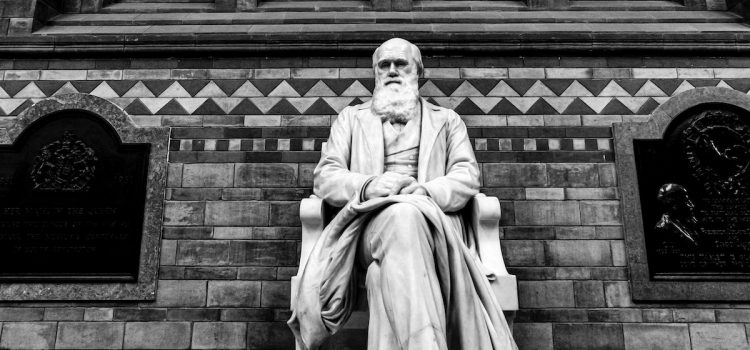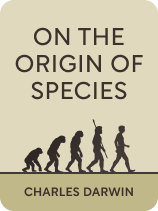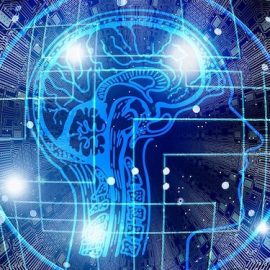

This article is an excerpt from the Shortform book guide to "On the Origin of Species" by Charles Darwin. Shortform has the world's best summaries and analyses of books you should be reading.
Like this article? Sign up for a free trial here.
What is Darwinian evolution? What does the process entail? How does evolution shapes organisms?
On the Origin of Species explains and argues for Charles Darwin’s theory of evolution. Essentially, the theory states that organisms weren’t created separately in their current forms. Rather, each species evolved gradually from other species over the course of millions of years.
Keep reading for an overview of Darwinian evolution according to On the Origin of Species.
What Is Darwinian Evolution?
What is Darwinian evolution? Darwin explains that species gradually develop through a natural process called evolution. He argues that biology is constantly in flux and that all organisms are related through a deep genealogy of species. We’ll first explore the mechanisms behind that process. Then we’ll take a closer look at how this process shapes the natural world.
Darwin developed his theory through years of cataloging plants and animals. He also drew insights from his voyage to the Galapagos Islands aboard the HMS Beagle and from his experience breeding pigeons. Darwin’s theories were controversial at the time. Prior to his work, most people believed that organisms had been created independently and were incapable of change on a macro level.
(Shortform note: Darwin didn’t develop this theory in isolation. Instead, he drew inspiration from many leading thinkers and scientists of his day such as the naturalist Jean-Baptiste Lamarck, who was the first to propose that species change over time. Darwin also collaborated with naturalist Alfred Wallace, who independently developed the idea of natural selection and even collaborated with Darwin by pooling his data with Darwin’s. Darwin also drew inspiration from geologist Charles Lyell, a geologist who proposed the theory of uniformitarianism. This theory maintains that natural processes have remained consistent throughout time and that we can therefore understand the origins of the world around us by looking at processes happening in the present.)
The Mechanisms of Evolution
Darwin explains evolution as a process with four key mechanisms: variation within a species, heritability of variations, natural selection, and gradual accumulation.
1) Variation Within Species
Organisms in every species vary slightly. Darwin observes that, when examined closely, no two creatures are identical. Their body parts all have slightly different shapes, sizes, textures, and colors. Even vital organs like hearts, kidneys, and spinal cords vary slightly in size and shape from creature to creature. Among humans, for example, you’ll find minor differences in height, bone structure, fingernail density, tongue flexibility, thumb shape, and so on.
2) Heritability of Variations
Furthermore, Darwin explains that these variations are heritable: They can pass from parent to child through reproduction. For example, if your parents have red hair, you’re more likely to have red hair as well. This means that the variations in a given species were likely passed down from parents who also had these variations.
3) Natural Selection
However, not all variations stand an equal chance of being passed along to the next generation. Darwin asserts that any heritable variation that provides one member of a species with an advantage in survival and reproduction over another, no matter how slight, will gradually allow members with that variation to survive and reproduce more than those without it. Over successive generations, natural selection will favor the most useful variations while eliminating the least useful.
Darwin explains that natural selection happens constantly because many organisms in nature aren’t able to reproduce and survive. Problems such as scarcity of food, competition between species, predators, and disease all limit the number of organisms in a species that will successfully pass on their heritable variations. This pressure ensures that variations that enable survival and reproduction are strongly selected for, while those that don’t confer an advantage are selected against.
4) Gradual Accumulation
Finally, Darwin argues that this slow accumulation of useful variations changes a species over time. As some traits are selected for and others selected against, the species gradually shifts as more of the population inherits the most useful traits.
For example, a deer with slightly longer legs than other members of its species can run faster than the others, allowing it to escape more easily from predators. Not only is this deer more likely to survive long enough to reproduce, but its offspring are also more likely to survive long enough to reproduce because they’ll inherit this useful trait. This means that after many successive generations, more deer will inherit the trait of longer legs than the trait of shorter legs. Eventually, you’ll have an entire population of faster, lankier deer.
How Evolution Shapes Organisms
Darwin argues that this process has shaped the natural world around us. In this section, we’ll explore how evolution shapes organisms by adapting them to their environments and ecosystems. Finally, we’ll discuss how evolutionary pressures shape adaptive traits.
1) Organisms Adapt to Their Environments
Darwin explains that the process of evolution synchronizes creatures with their environments. While evolution selects for useful traits and against detrimental ones, traits are only useful or detrimental in the context of a particular environment. For example, polar bears insulate themselves from the cold with a thick layer of fat called blubber. This adaptation is perfect for an animal living in the Arctic, but it’d cause a desert creature to overheat. Therefore, blubber is advantageous for polar creatures but not desert-dwelling ones.
Along with physical traits, organisms adapt behaviors that allow them to survive in a particular environment. Polar bears, for example, have acquired the survival strategy of hunting seals to get the calories they need. The necessity of hunting then continues to shape their evolution: Traits such as powerful jaws, sharp teeth, and claws then become adaptive as well, as these all increase the chances that a polar bear will survive long enough to pass on its genes.
2) Organisms Adapt to Their Ecosystems
In addition to adapting to their physical environment, organisms adapt to the presence of other organisms. Darwin explains that because organisms have evolved alongside each other, they have developed a deep interdependence. For example, many caterpillars are camouflaged to look like leaves, twigs, bark, and even flowers. These adaptations would only have been useful if the insects already lived around plants with these features. Thus, evolution has synchronized these organisms to each other’s presence to create tightly interdependent ecosystems.
3) Evolutionary Pressures Shape Adaptive Traits
Darwin also argues that evolution produces similar features in unrelated organisms—what biologists call convergent evolution. Features that are essential for survival or locomotion in a particular environment often take similar shapes. For example, fish, whales, and sea turtles all independently developed similar fin shapes for swimming because these are the most useful appendages for moving through water.
However, characteristics that aren’t constrained by the environment—like those shaped purely through mate selection—tend to vary. Biologists call this divergent evolution. For example, many species of fish select mates through complicated displays of color and movement. Darwin explains that these displays vary wildly because they’re not pressured into conformity through the same environmental constraints that produce similar fin shapes in aquatic animals.

———End of Preview———
Like what you just read? Read the rest of the world's best book summary and analysis of Charles Darwin's "On the Origin of Species" at Shortform.
Here's what you'll find in our full On the Origin of Species summary:
- Charles Darwin's theory of evolution that changed how we look at life on Earth
- The objections raised against Darwin's theory and Darwin's rebuttals
- Updates on Darwin's theories from contemporary biology






